My rail layout

Background
Märklin in Germany is a long established company which excels in the manufacture of model rail locomotives, coaches etc.
In 2013 whilst holidaying in Germany, I purchased this digital starter set. It came with two digitally operated points/switches. Points=UK, Switches=US, Weiche=DE
BR 81, DB | Gauge H0 – Article No. 29539 “Freight Train” Digital Starter Set. 230 Volts.
Shortly after I returned from Germany, I purchased from Amazon.uk:
BR 24 DB, ABi, Bi, Rr 20 | Gauge H0 – Article No. 29240 “Branch Line” Digital Starter Set. 230 Volts.
Layout 2013 – 2014
These two sets with some additional track and other bits and pieces made up my first attempt at a HO scaled 1:87 layout. It comprised of a single track with crossover loop and a passing loop for a station and a small siding . The orange section was a raised incline that looped back on itself. In retrospect the incline was greater than the recommended 4% and caused occasional slippage of the locomotives. The crossover loops allowed a locomotive to reverse its passage around the main route..
Layout 2015 – July 2019
I kept the layout until September 2015 when I created the layout below. It is designed as a double tracked oval with crossover loops and sidings providing chances for a back to back operation as well as the two other locos passing.
I now operate three digital locomotives two steam locomotives and a diesel given as a 2015 Christmas present.
Layout 2019 – work in progress!
In this revision of my layout I’ve added a high level reversing loop which should provide a continual looping of locomotives plus the possibility of two other locomotives working on other routes, that is if ever I get a CS3 and S88’s working in concert. I’m also hoping to operate a shuttle service between the station and the goods yard.
The base stripped bare
Just toying with the idea of a hillside going across the valley between the two hillsides. I enjoy this part of the building the most as I try out different landscaping options before the detailing begins.
This layout will also provide me with the opportunity of refining ie completely removing and redoing the lighting circuits I’ve been using.
Photographs of 2015 Layout
Information about the Prototype
Class 24 – Prairie Pony in Prussia.
Between 1926 and 1938, a total of 95 units of the class 24 were purchased for the flat, long branch lines in East and West Prussia. These locomotives were nicknamed the „Prairie Pony“ and were designed as a passenger locomotive, but were soon used as a general-purpose locomotive. This 1 6.96 meter / 55 foot 7-11/16 inch long locomotive reached a maximum speed of 90 km/h / 56 mph. It was a parallel class to the class 64 and gave very good results in the tasks assigned to it. The division of Germany and the areas surrendered to Poland resulted in 38 units finally coming to the German Fed- eral Railroad, where they continued to perform valuable ser- vice on branch lines, often with „Donnerbüchsen / Thunder Box“ passenger cars. Gradually, they were replaced in many locations by the class VT 95 and VT 98 red rail busses, were retired and scrapped. They last home base was Rheydt; there they left regular service in 1966 on the German Federal Rail- road. In Poland the 34 locomotives left there after World War II were indispensable up to 1976. Four Prairie Ponies remain preserved as museum pieces; one of them is from the roster of the Polish State Railroad (PKB).
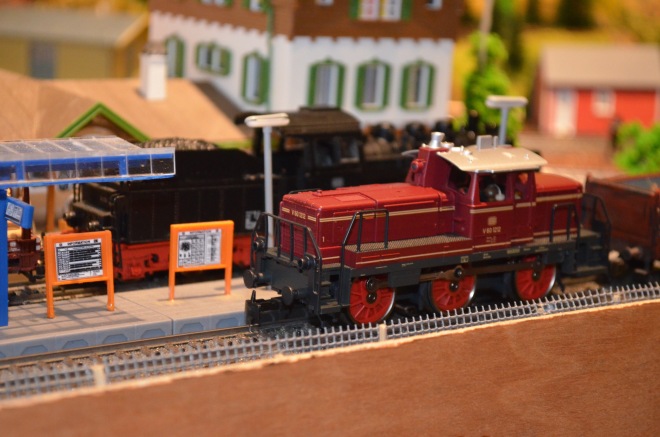
Information about the prototype
The German Federal Railroad class 260/261 is a three-axle, diesel-hydraulic locomotive with a jackshaft and side rods. It was developed because a distinct need for powerful switch engines arose in the mid 1950s on the DB. All of the famous German locomotive builders participated in the development and manufacture of the locomotives classified as V 60 until 1968.
The 10.45 meter /33.96 feet) long locomotives have a maximum speed of 60 km/h (37 m.p.h.). A 12 cylinder diesel motor from Maybach serves as the power plant. To reduce labor costs these locomotives were demoted in 1987 to the classification small locomotives with the class numbers 360/361. The classes 364/365 are equipped with remote radio controls. A signal light on both sides of the engineer’s cab indicates unmanned operation.
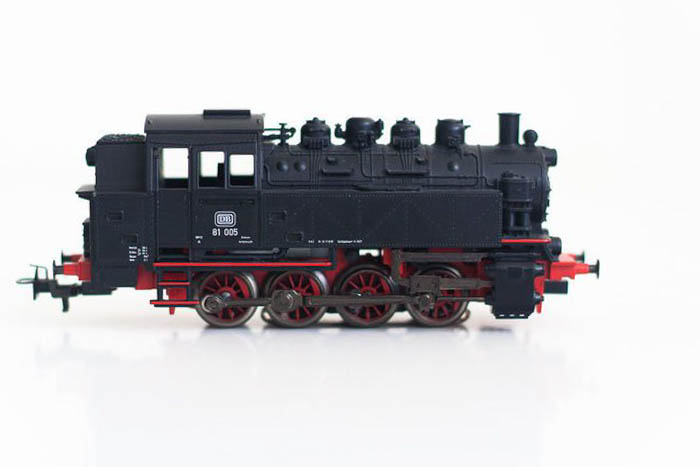
A sturdy little puffer, that keeps on going …
Information about the Prototype
Tank locomotives with a 20 metric ton axle load and three, four, and five coupled driving axles were planned in the German State Railroad Company‘s standardization program. Initially, the only units built were the 0-6-0T as the class 80 (39 units) and the 0-8-0T as the class 81 (10 units) in 1927. The boiler on the class 81 was about one meter / 39 inches longer than that on the class 80. The coal bunker and the water tanks were also larger. The essential parts of the running gear are the same
on both locomotives, including the wheels with a diameter of 1,100 mm / 43-5/16“, so that these parts were interchangeable on the locomotives.
With a power output of 860 horsepower at a maxi- mum speed of 45 km/h / 28 mph the class 81 was even able to switch heaving freight trains of 1,100 metric tons. Since there were enough heavy tank locomotives left over from the provincial railroad period, a subsequent order for 60 units was not placed until 1939. However, the Second World War prevented these additional quantities of locomotives from being built. The number of class 81 locomo- tives thus remained at 10 units that came to the DB after 1945 and that were used in the area of Olden- burg and Paderborn until they were retired in 1963.

Information about the Prototype – Henschel Baureihe DH / DHG
Henschel’s standard diesel locomotives are used all over the world on industrial and harbor railroads.They can be found at steel factories and mines aswell as in the automobile industry and sugar refineries.A unit assembly approach with motors between 360and 900 hp has significant economic and operatingadvantages due to the interchangeability of manycomponents. The original DH design was powered mechanicallyusing a jackshaft and side rods. The typical shapeand form of the superstructure for these small Henschel locomotives with a center cab and roundedhoods was changed slightly for the heavy type DHGwith hydraulic drive gear. In the 1970s the units thathad been delivered were given a facelift with modernsuperstructures with squared off corners and edges.Starting about 1980 the frames were mounted oncoil springs instead of leaf springs. All of the variousversions of these locomotives can still be seen today.Some of these units have changed owners severaltimes and habe been rebuilt to meet the requirementsof individual customers.

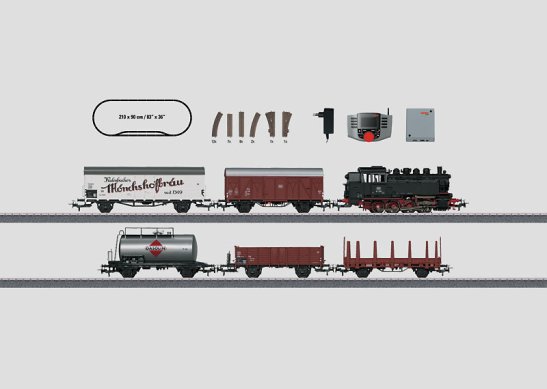
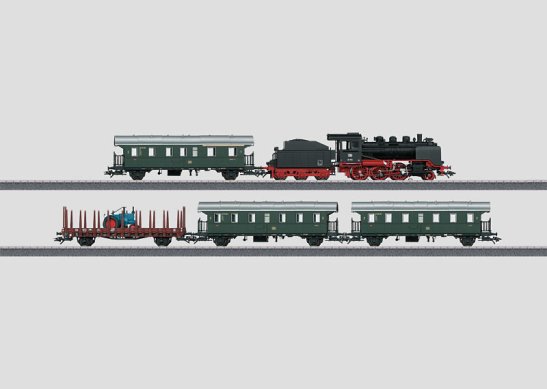

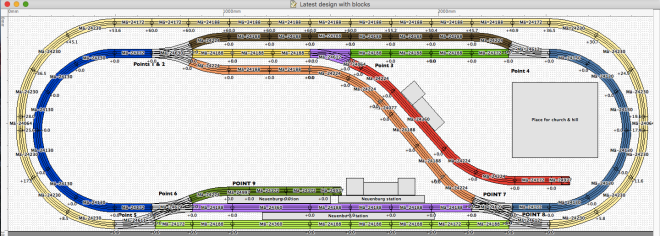



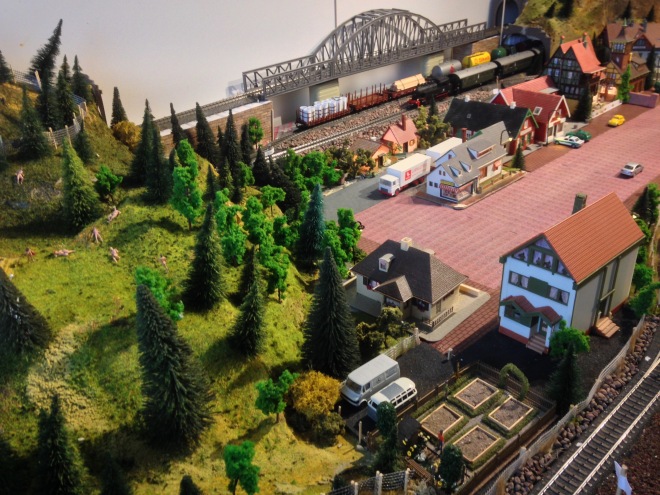
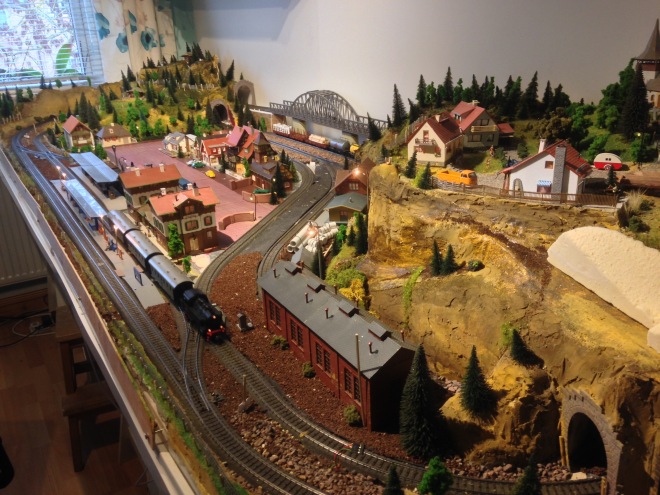
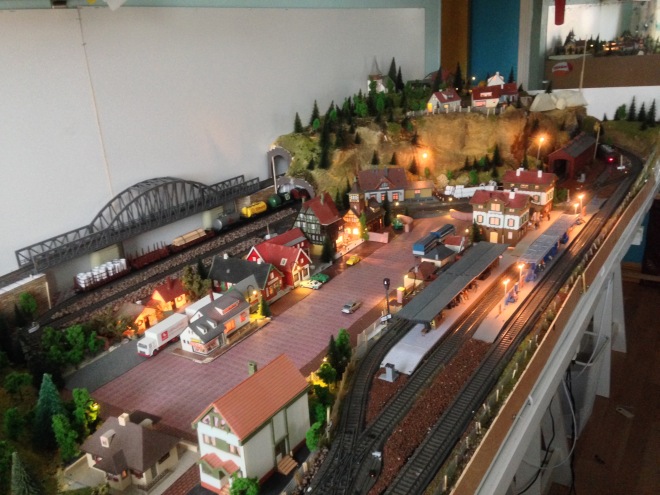
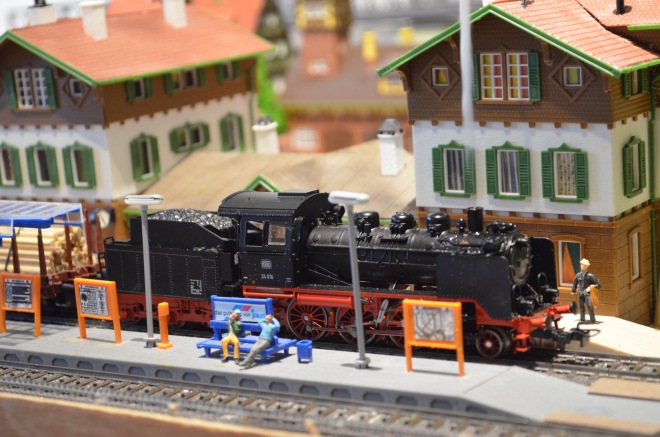
Great web site – thanks for spreading the word! Please get in touch if I can provide a free license for RM Pro for your reviewing and track planning needs.
LikeLike
Thanks for your kind words. I’ve been away for a few weeks so I’ve only just caught up with my messages, and thanks for the the offer which would be marvellous to try out. I’m about to construct the 30+ voltage step down circuits for the track to arduino so they’ll take a while to get started/finished. Keep up the good work on your web site t00, its a real help and inspiration.
LikeLike
Hi,
you have done great work with your layout and your site, I would like to include your site in my informational site for railroading, what do you think ?
Check out if you like the http://trains.dgservices.gr (it is in Greek and English so far)
Thank you
Dimitris
LikeLike
I am so pleased you enjoyed my site. Feel free to reference it on your site. I’m out visiting at the moment so I’ll check out yours later. Thanks for visiting 😋
LikeLike
This is great, Thank you !
LikeLike
oranda, please send me a PN to get your trains running with your new CS 3. Thanks.
LikeLike
I am very much interested in your ideas about using center rail with your new S88 and CS3. I really do not like cutting rails. Please post some more about it when you can. I really like your approach.
LikeLike
Hi Eric Thanks for visiting my web site. The centre rail idea does work with a bit of work, but after using it for some a time, I may revert my layout to the Märklin intended manner of track detection using the outer rails. As the latest CS3 software events develop the new event for braking depends on a length of isolated track that is used for loco detection (it will also detect trucks and carriages being pulled by the loco ,or for that matter parked, on the same section of isolated track) which my centre rail detection does not (it only detects the loco it also detects the the loco entering a isolated section and leaving it. The centre rail detection I use, only momentarily detects the loco, at the specific point on the track. So whilst it works it doesn’t satisfactorily work with the new braking event. I can simulate a block by the use of two centre rail detectors so I can produce a slow down to a stop etc. However if I wish to create at some stage later, a block occupancy detection for automatically running more than one loco simultaneously on the same loop, then I think the original track occupancy using outer rails may be the only and simplest method. The use of the centre rail, was intended to be an experiment, and I’ve learnt a lot form trying it, but my next layout is likely to use the Märklin preferred system of detection. One notable change to using the Märklin solution is that the number of detection wires will be reduced by half as I will only need one wire between the entry and exit of the isolated piece of track.
LikeLike